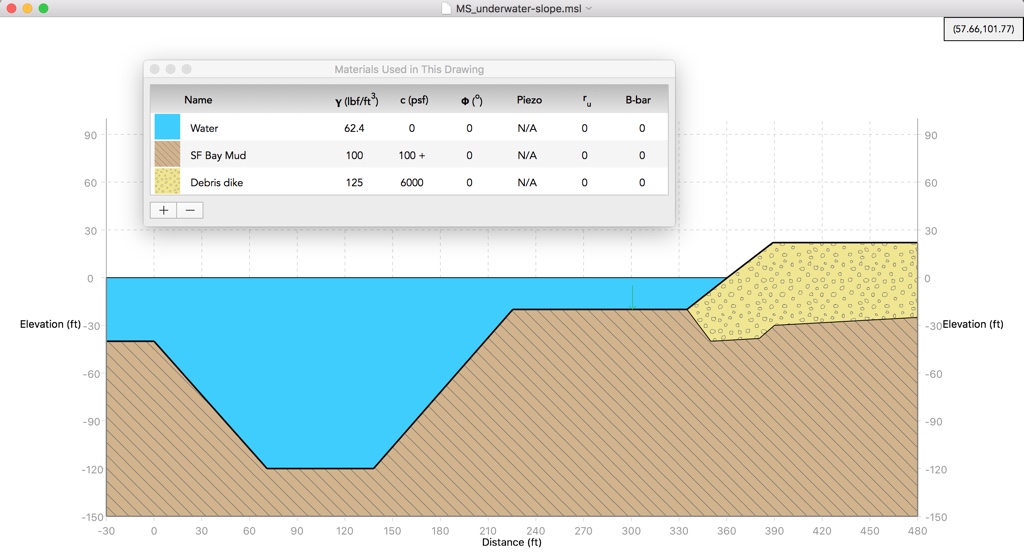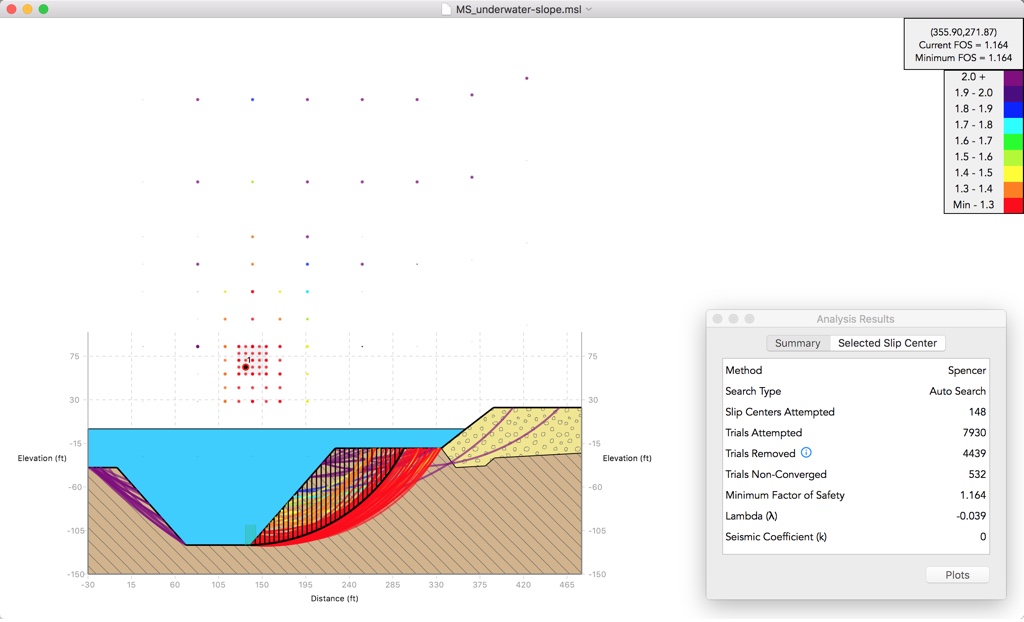- Index
-
Verification
Underwater Slope in San Francisco Bay Mud
The following problem for verification is the slope described in Duncan and Buchignani (1973), and was part of a temporary excavation for a channel in the San Francisco bay. The slope was designed with a low factor of safety to minimize construction costs and during construction a portion of the slope failed. The calculated minimum factor of safety was 1.17.The geometry and material parameters are shown below.

The San Francisco Bay Mud has been assigned a unit weight of 100 lb/ft3, and an undrained shear strength that increases with depth. The initial value is 100 psf and it increases with respect to the datum elevation of -20 ft at a rate of 9.8 psf/ft. The debris dike material is not of interest to this example, although a value of 125 pcf unit weight and 6000 psf undrained shear strength has been assigned to it, and slip surfaces passing through the debris dike result in a higher factor of safety than for the underwater slope.
An auto search was completed with an auto resolution tolerance of 5. The option to apply external hydrostatic forces to the tops of slices was chosen rather than including no strength regions in the slice geometry. The resulting minimum factor of safety calculated using the Spencer method was 1.164. The analysis results summary and heat safety map for the analyzed slip surfaces are shown below.

Download the MacSlope file with the analysis results for this verification example here.